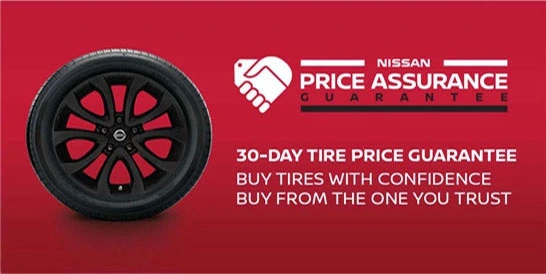Anti-Lock Braking System (ABS) Warning Light
Airbag Warning Light
Your vehicle's airbags or seat belts may require service.
WARNING: If the supplemental airbag warning light is on, it could mean that front airbag, side airbag, curtain and rollover airbag systems and/or pretensioner systems will not operate in an accident. To help avoid injury to yourself or others, have your vehicle checked as soon as possible.
The supplemental air bag warning light may indicate that the passenger safety systems in your vehicle are malfunctioning. After setting the ignition switch to the ON position, the supplemental airbag warning light will illuminate and then turn off after a few seconds. This indicates that front-impact airbag, side airbag, curtain, and rollover airbag systems (if equipped) and/or pretensioner seat belts (if equipped) are operational. If the supplemental airbag warning light remains on after a few seconds, or flashes intermittently, or does not come on at all, this indicates that you should schedule an appointment to have your airbag system serviced at your local Nissan dealer.
Find and review your Owner’s Manual or contact your Nissan dealer for more information.
Schedule ServiceBrake Warning Light
Your vehicle’s braking system may require service.
WARNING: A brake system malfunction can result in a loss of braking effectiveness and could be dangerous if not corrected. Only drive the vehicle if it is safe to do so. Your vehicle should be towed/transported and not driven if:
- Brake fluid is exceedingly low and/or escaping from your vehicle.
- Pressing the brake pedal does not effectively stop the vehicle.
Your vehicle’s brake warning light may warn of low brake fluid level. If the light comes on while the engine is running and the parking brake is not applied, stop your vehicle when safe to do so and check the brake fluid level. If the level is low, add the recommended fluid. If it is correct, schedule service at your local Nissan dealer to have it checked.
Find and review your Owner’s Manual or contact your Nissan dealer for more information.
Schedule ServiceMalfunction Indicator Warning Light
Your vehicle's engine may require service.
If the Malfunction Indicator Light (MIL), also commonly referred to as the Check Engine Light, is steadily lit, check to see that the fuel filler cap is not loose or missing.
If the MIL is blinking, you may have a misfire or other component malfunction. To reduce or avoid emission control system damage:
- Do not drive at speeds above 72 km/h.
- Avoid hard acceleration or deceleration.
- Avoid steep uphill grades.
If possible, reduce the amount of cargo being hauled or towed. Continuing to drive while the MIL is blinking may damage your vehicle’s components.
Find and review your Owner’s Manual or contact your Nissan dealer for more information.
Schedule ServiceOil Pressure Warning Light
Your vehicle’s engine oil pressure is low.
Running the engine with low oil pressure could cause serious damage to the engine. Do not drive a vehicle if this light is on. You may check your engine oil level and top up to the recommended levels if low.
Low oil pressure does not necessarily mean that your engine’s oil level is low. If the oil level is within the recommended range, or an oil leak is evident, the oil pressure warning may have been triggered by a malfunction or failure.
Find and review your Owner’s Manual or contact your Nissan dealer for more information.
Schedule ServiceTire Pressure Monitoring System Warning Light
One or more tires may be underinflated on your vehicle.
Your vehicle is equipped with a Tire Pressure Monitoring System (TPMS) that monitors the tire pressure of all installed tires. The low tire pressure warning light indicates that one (or more) of your tires is underinflated, or that your TPMS is not functioning properly. If your vehicle is being driven with low tire pressure, the TPMS light will turn on continuously. If so equipped, your vehicle’s display will also indicate the pressure for each tire.
ACTION REQUIRED: When safe to do so, use a tire pressure gauge to check that your tires are inflated to the recommended pressure shown on the Tire and Loading Information label. Allow tires to cool if necessary and inflate to the proper pressure. The low tire pressure light will not immediately turn off when tire pressure is adjusted. Once you have inflated tires to the recommended pressure, the vehicle must be driven above speeds of 16 MPH (25 km/h) to activate the TPMS and turn off the low tire pressure warning light. If you have checked the tire pressure on all four tires and the low tire pressure warning light does not turn off, schedule service at your local Nissan dealer to have the system checked.
TPMS Malfunction: If your TPMS is not functioning properly, the low tire pressure warning light will flash for approximately one minute when the ignition switch is turned on. If the light remains on after one minute, have your system checked by a Nissan dealer. If the light does not illuminate when the ignition switch is set to ON, have your vehicle checked by your Nissan dealer as soon as possible.
For additional information, find your Owner’s Manual and refer to the “Tire Pressure Monitoring System (TPMS)” section.
Schedule ServiceComplimentary multi-point inspection

Did you know Nissan Express Service includes a complimentary multi-point inspection ? Our Nissan-trained technicians will inspect your vehicle and provide you with an easy-to-read inspection report to let you know if anything needs attention.
Schedule Service
Guaranteed. [*] Exclusions apply.












